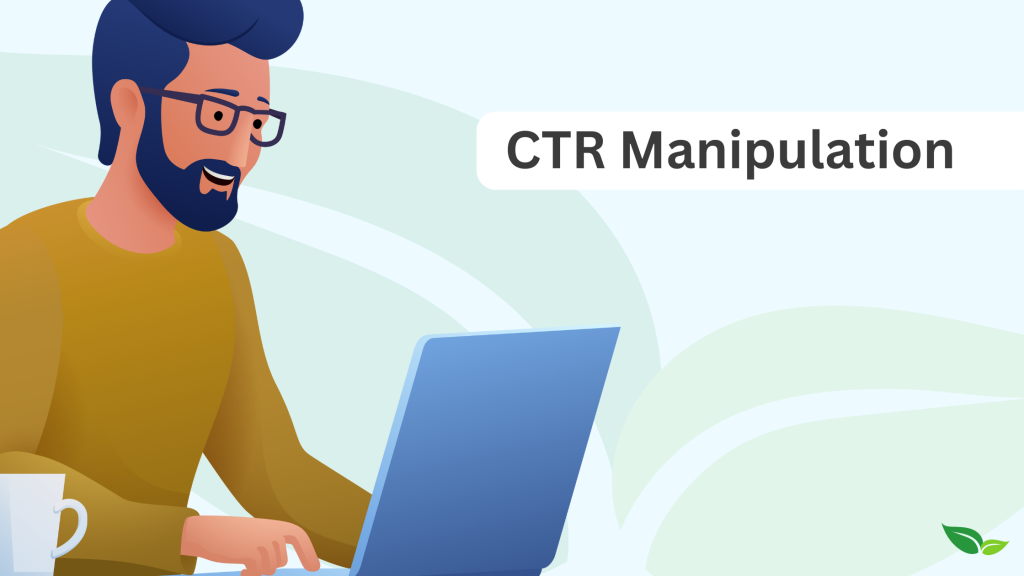Attain Greater Advertisement Success With Strategic CTR Manipulation
In the realm of electronic marketing, achieving better success hinges dramatically on the critical adjustment of click-through rates (CTR) As we check out the nuances of CTR optimization, it comes to be apparent that the course to efficient ad projects is a lot more complex than it appears, exposing critical understandings that could change your approach.
Recognizing Click-Through Rate
Click-through price (CTR) is an essential efficiency metric that evaluates the effectiveness of electronic advertising campaigns by determining the proportion of users who click a certain link to the number of overall users that see the associated web content. This metric offers as an indication of just how well a project reverberates with its target audience, mirroring the allure of the content and its call-to-action.
CTR is commonly revealed as a percent, determined by separating the number of clicks by the variety of impressions and increasing by 100. A greater CTR indicates that customers discover the web content interesting and appropriate, while a reduced CTR might recommend a need for renovation in content top quality, targeting, or discussion.
In addition, CTR can differ significantly across different platforms and styles, such as email advertising and marketing, social media sites, and display advertisements. Comprehending these variations is crucial for marketing professionals to customize their methods properly. Examining CTR together with other metrics, such as conversion price and involvement degree, offers much deeper insights into user behavior and overall campaign efficiency. By grasping the subtleties of CTR, marketing experts can make enlightened decisions to enhance their digital marketing efforts - CTR Manipulation Press Release.
Significance of CTR in Marketing

Additionally, CTR plays an essential function in optimizing advertising and marketing expenditures. Marketing platforms, such as Google Advertisements and Facebook Ads, use CTR as a key variable in establishing ad placement and cost-per-click (CPC) A higher CTR can lead to lower CPCs, taking full advantage of budget effectiveness and enhancing return on investment (ROI)

Techniques for CTR Optimization
Optimizing Click-Through Rate (CTR) is critical for advertisers seeking to enhance click for source the performance of their campaigns. Carrying out targeted strategies can substantially improve CTR, ultimately leading to far better ad performance.
Firstly, refining advertisement duplicate is vital. Crafting compelling headlines and clear phone call to activity (CTAs) can draw in users' focus and urge clicks. Using action-oriented language and stressing worth proposals can effectively resonate with the target market.
Secondly, employing A/B screening is essential. By try out different elements such as visuals, copy, and positioning, advertisers can determine which combinations produce the highest CTR. This data-driven method makes it possible for continuous optimization of ad material.
Thirdly, optimizing targeting specifications is essential. By narrowing the target market based on demographics, rate of interests, and actions, advertisers can ensure their ads reach those more than likely to engage, thus increasing the probability of clicks.
Lastly, leveraging aesthetic elements can improve interaction. Distinctive photos or video clips that enhance the advertisement message can attract focus and enhance CTR.
Examining CTR Performance Metrics
Comprehending the subtleties of CTR performance metrics is important for marketers intending to gauge the performance of their campaigns. Click-through rate (CTR) functions as a key sign of audience engagement, showing the proportion of users who engage with an ad relative to the amount of times it was shown. A high CTR commonly recommends that the ad reverberates well with its target market, while a reduced CTR may indicate a need for tactical changes.
To examine CTR performance properly, marketers ought to take into consideration various factors, including the placement of the ad, the importance of the web content, and the target group. Segmenting information by tool type or geographic place find more info can offer deeper understandings right into user behavior and preferences. In addition, comparing CTR throughout different campaigns and systems can help determine best-performing methods and areas for improvement.
On a regular basis monitoring and interpreting these metrics allows advertisers to make data-driven choices, enhancing their advocate improved performance. By recognizing the context behind CTR figures, marketers can improve their messaging and creative approaches, ultimately driving far better outcomes and achieving higher advertisement success.
Ethical Considerations in CTR Manipulation

Moreover, he has a good point advertisers need to consider the implications of targeting prone populations - CTR Manipulation Press Release. Manipulative techniques that make use of emotional triggers or create false seriousness can result in customer reaction and ethical scrutiny. Rather, marketers ought to concentrate on providing real worth via appropriate web content that resonates with their audience
On top of that, adhering to sector policies and standards is critical. Participating in deceitful techniques not just risks legal consequences however also weakens the honesty of the marketing ecosystem. By promoting a setting of honesty and liability, advertisers can improve their CTR while preserving moral requirements. Eventually, a commitment to honest techniques not only supports sustainable company growth but also grows lasting connections with consumers grounded in depend on and regard.
Verdict
In conclusion, critical adjustment of click-through prices (CTR) is vital for enhancing advertisement performance and driving conversions. By utilizing techniques such as polished ad duplicate, compelling visuals, and targeted A/B testing, marketing experts can properly involve target markets.
Comments on “Professional CTR Manipulation Service for Better Organic Click-Through Fees”